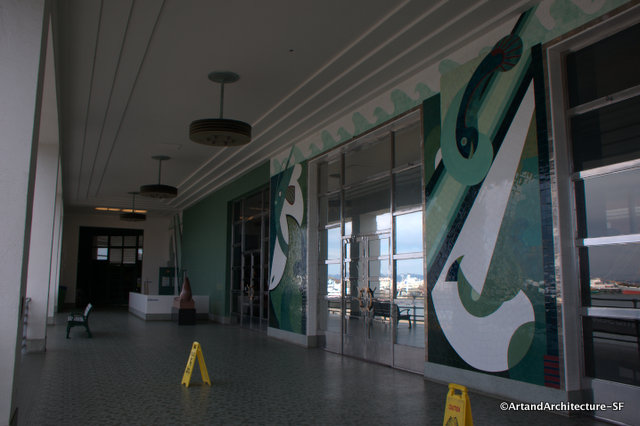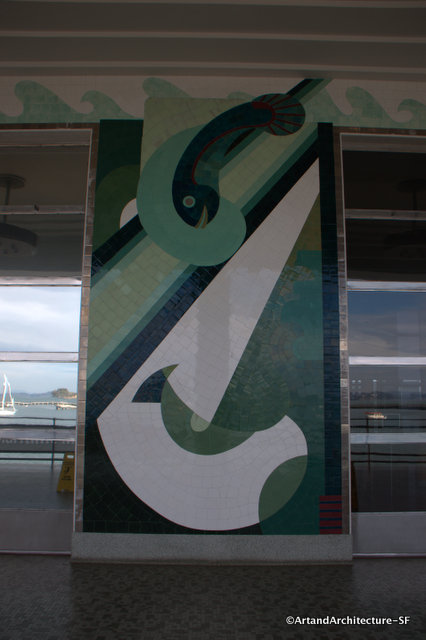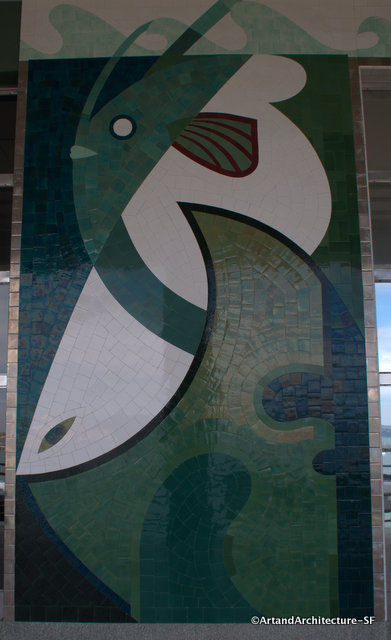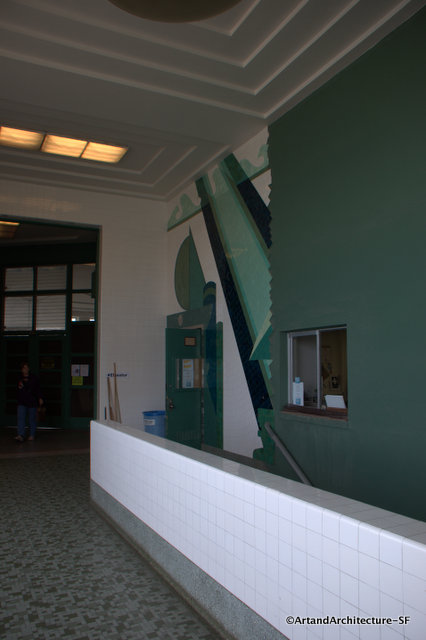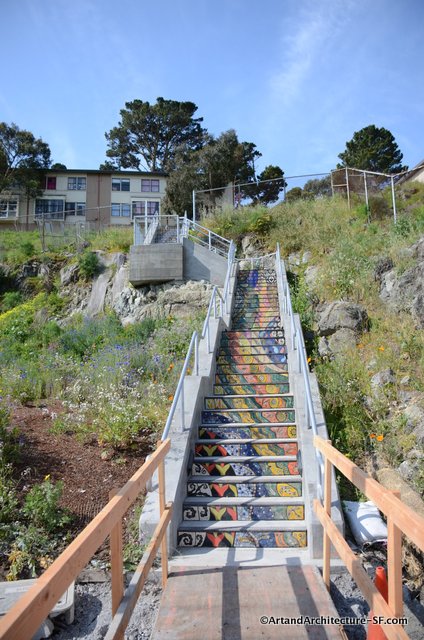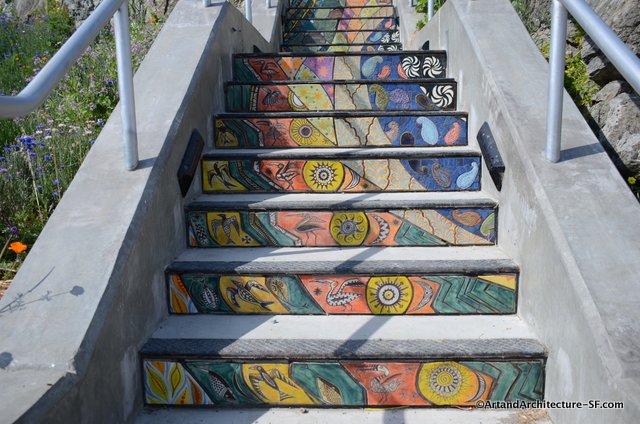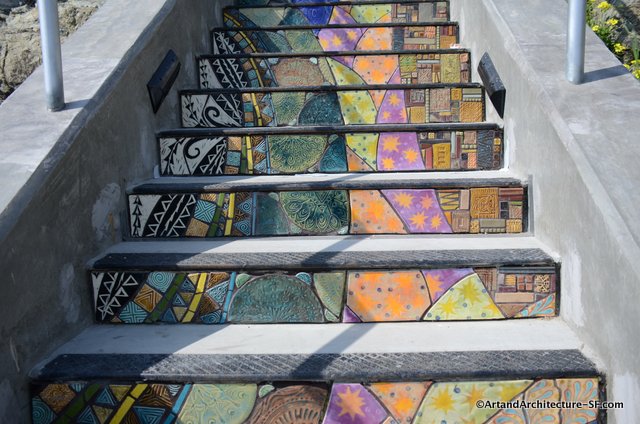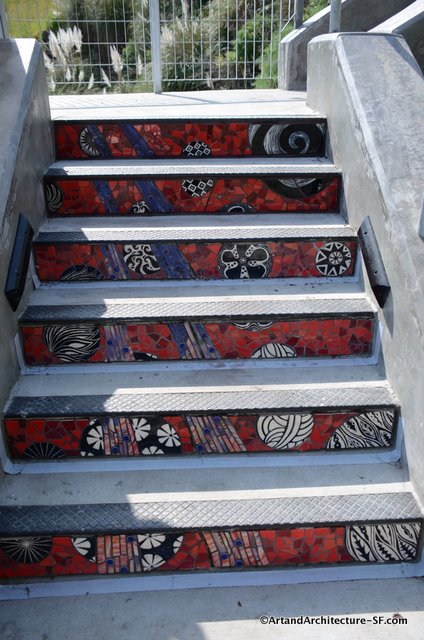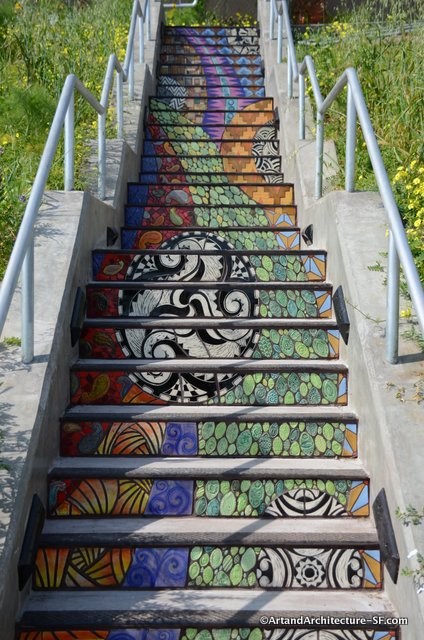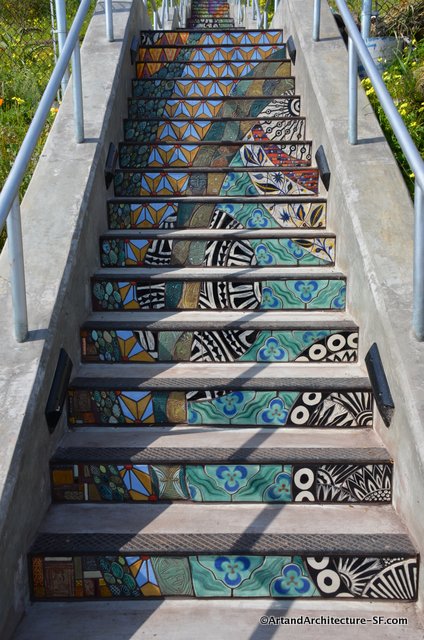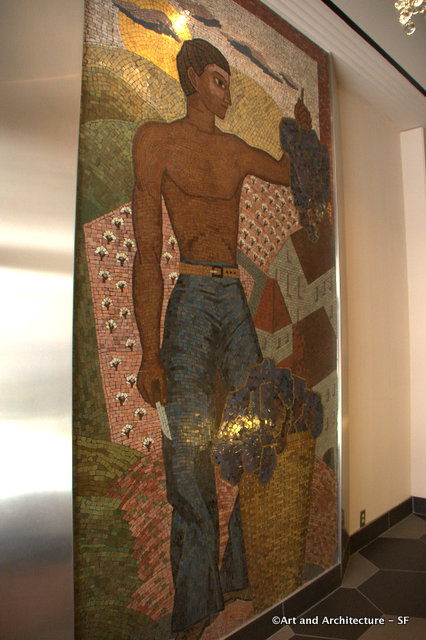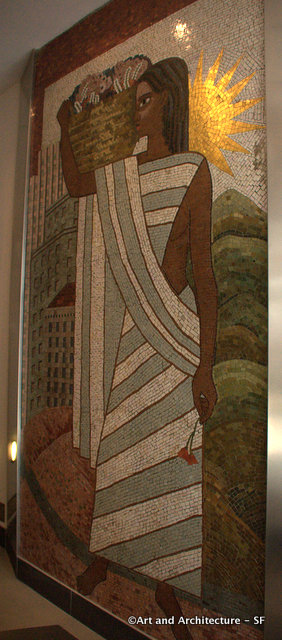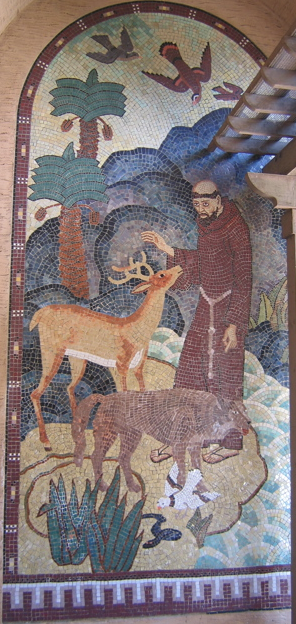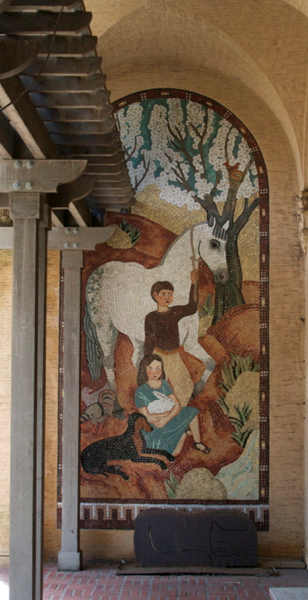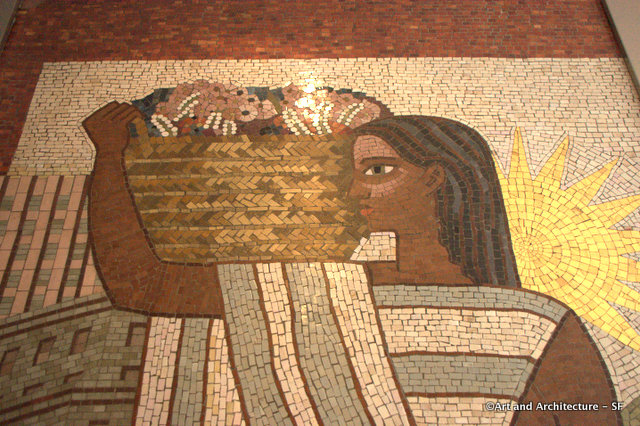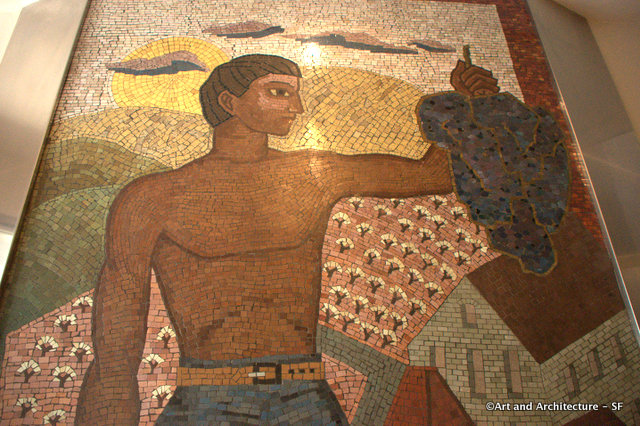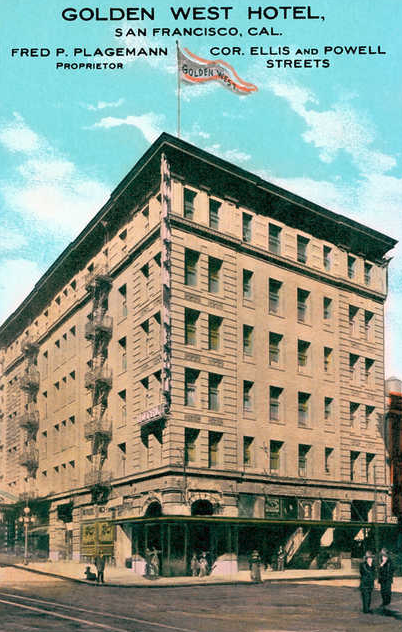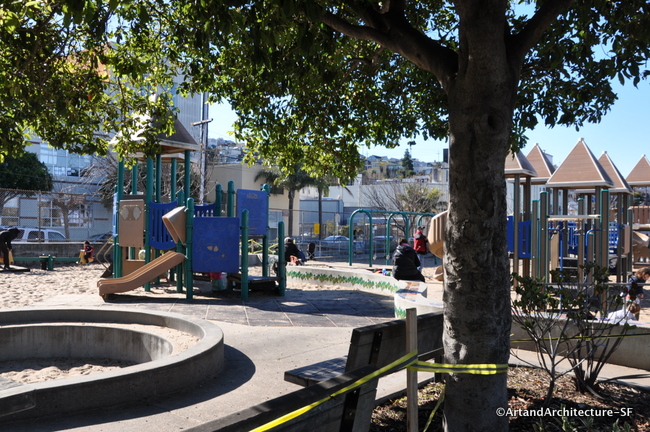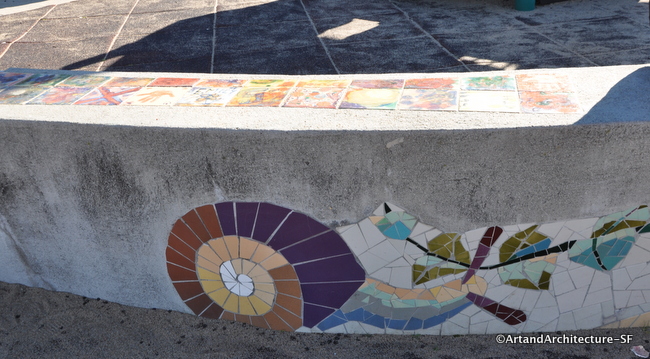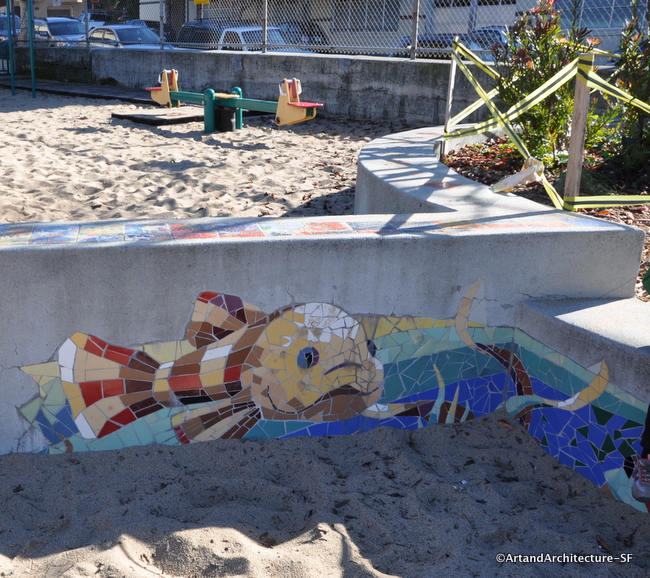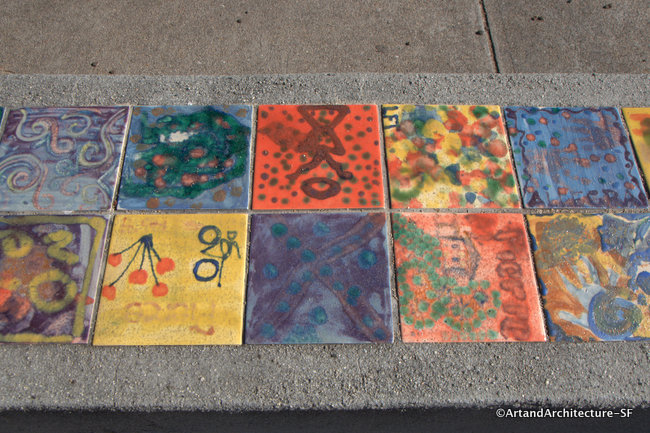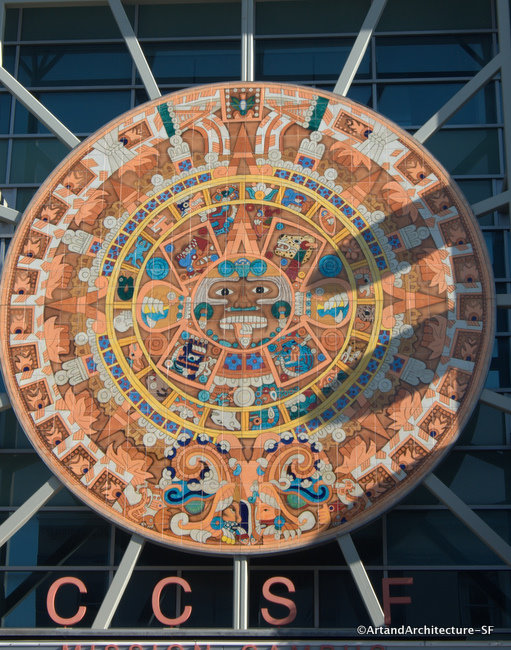Corner of Peabody and Leland
Visitation Valley

Opening in March 2001, Hans Schiller Plaza was the first Visitacion Valley Greenway site to be completed. Construction was supervised by the Trust for Public Land with funding from the Columbia Foundation founded by the late Madeleine Haas Russell. The gift was made in memory of her friend Hans J. Schiller.
Hans J. Schiller was a Bay Area architect and environmental activist. Mr. Schiller’ s career spanned more than 50 years. Schiller settled in the Bay Area in the 1940s and established the firm, Hans J. Schiller Associates, in Mill Valley. Schiller’s passion for his work was matched by his commitment to ensuring that people from all walks of life had access to parks and open space. It was these commitments that lead to his appointment by Governor Jerry Brown as Commissioner of the San Francisco Bay Conservation and Development Commission in 1978.
The Landscape architect on the project were Sarah Sutton and Chris Kukula of Wolfe Mason and Associates.

The Visitacion Valley Greenway is composed of a linear series of six publicly owned parcels (each a block long), cutting a swath through the heart of Visitacion Valley. Over a period of 16 years it has been developed by the members of the Visitacion Valley Greenway Project in partnership with the San Francisco Recreation and Park Department (SFRPD) and the Trust for Public Land. Originally a PUC easement, it took 5 years of negotiations to gain permission to build the Greenway. The Visitacion Valley Greenway is a Parks Partner of the San Francisco Parks Trust.
Visitation Valley Greenway would never have been possible without the tireless effort of artists Fran Martin, Anne Seeman and Jim Growden.
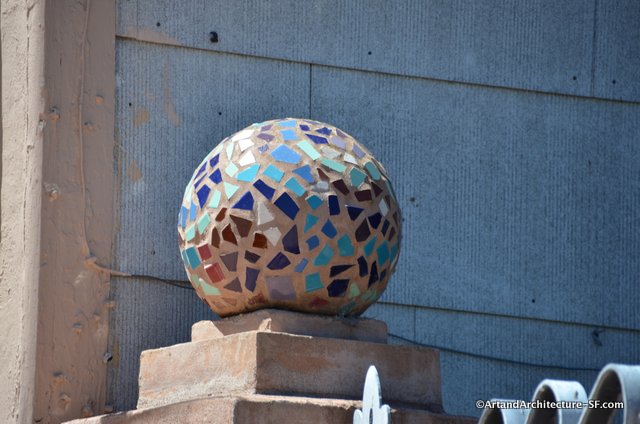 Fran Martin, Design Coordinator for Visitacion Valley Greenway was responsible for the tile work.
Fran Martin, Design Coordinator for Visitacion Valley Greenway was responsible for the tile work.
Fran holds an MA in art and worked as a sculptor until 1995. In 1994 she began working full time as a co-ordinator of the Visitation Valley Greenway Project.
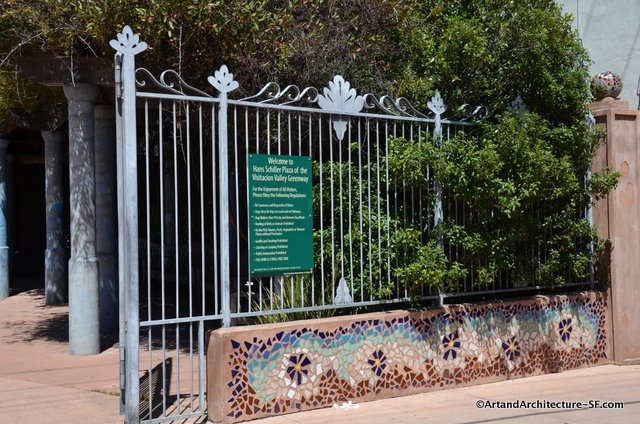 Jim Growden was the designer for the entry gates and fencing.
Jim Growden was the designer for the entry gates and fencing.
Jim received an M.A. in sculpture from the San Francisco Art Institute in 1972. Jim worked as a sculptor of wood and steel, for 25 in San Francisco. In 1993 he moved to Visitacion Valley where he became involved with the Visitacion Valley Greenway.
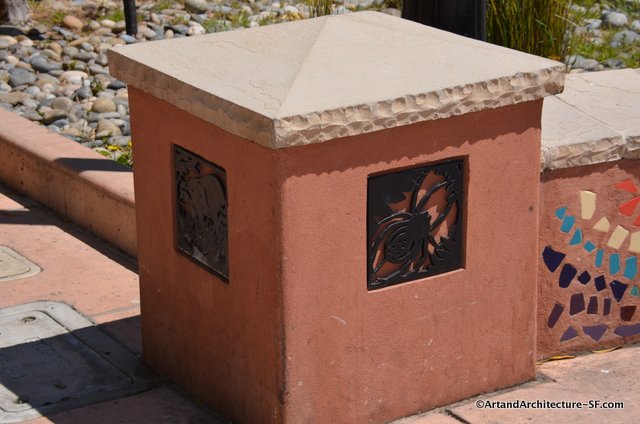
*
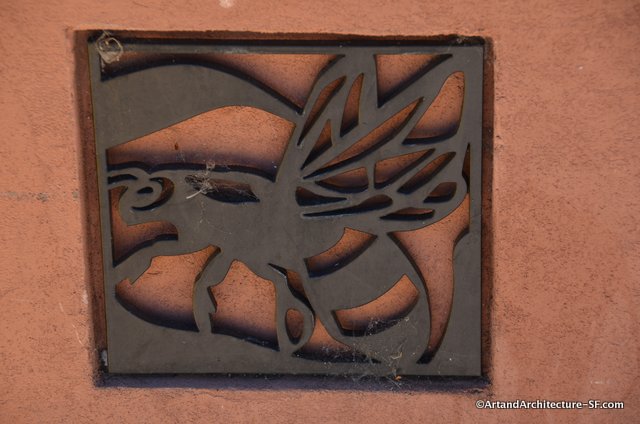
Jim Growden has created 8 of the Greenway’s 12 signature gates and finials, as well as the cut steel images of native animals and plants seen at the Native Plant Garden, as well as on Leland Avenue.
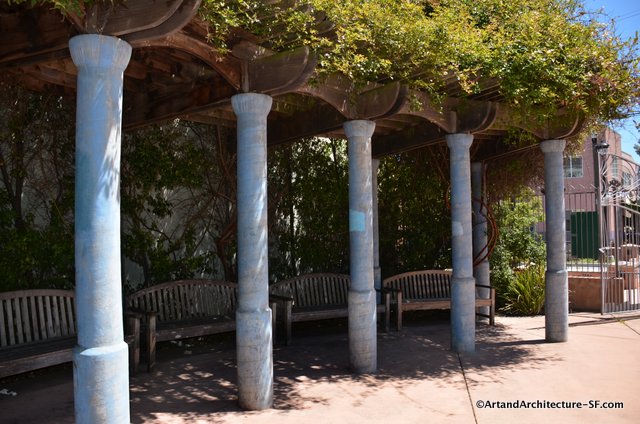 Fran Martin created 2 of the Greenway’s gates, weir walls, tile work and patios with columns sites.
Fran Martin created 2 of the Greenway’s gates, weir walls, tile work and patios with columns sites.

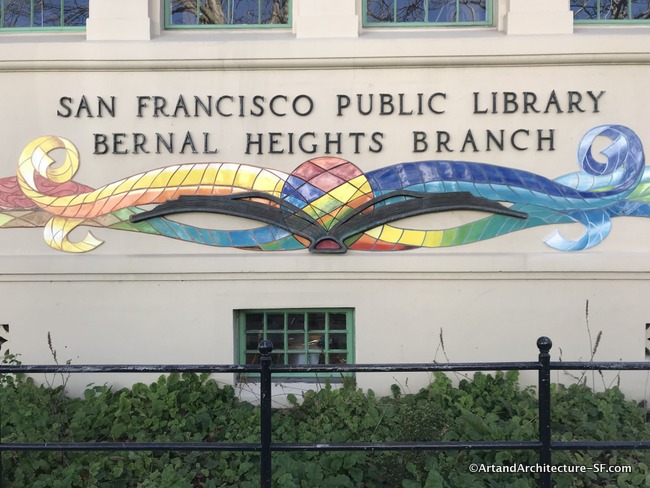

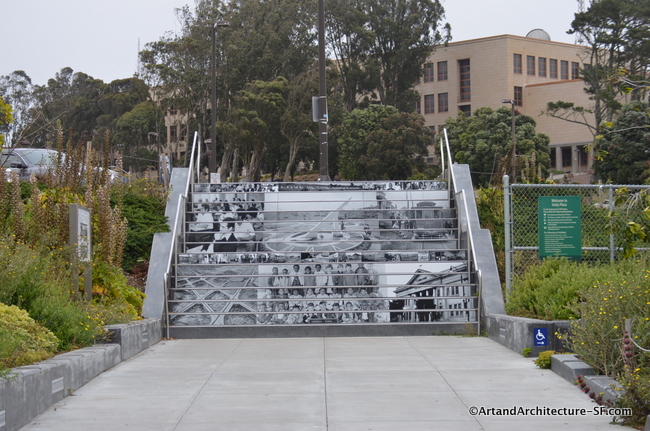

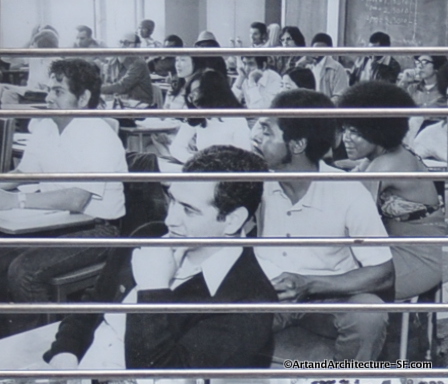 City College students, taken in 1973
City College students, taken in 1973
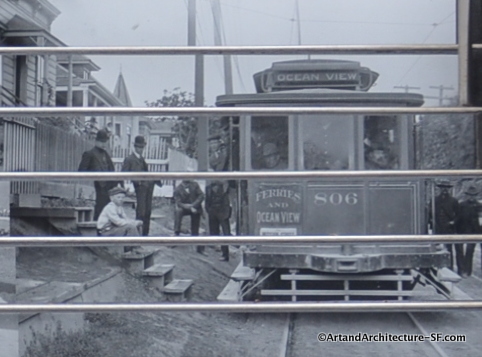 Street Cars
Street Cars The Rail and Streetcar Intersection in 1904
The Rail and Streetcar Intersection in 1904 The Ingleside Presbyterian Church founded in 1907
The Ingleside Presbyterian Church founded in 1907







